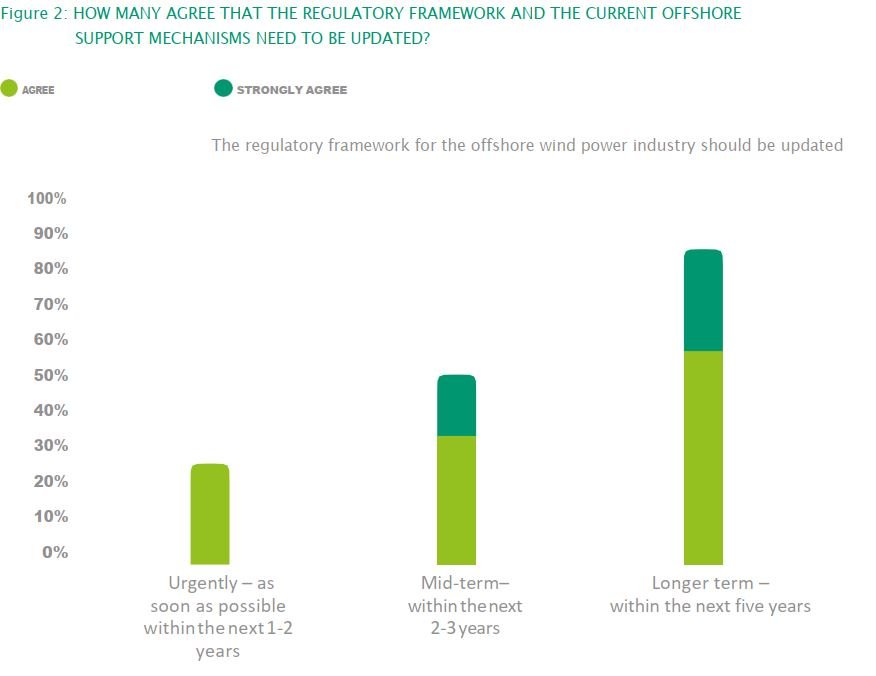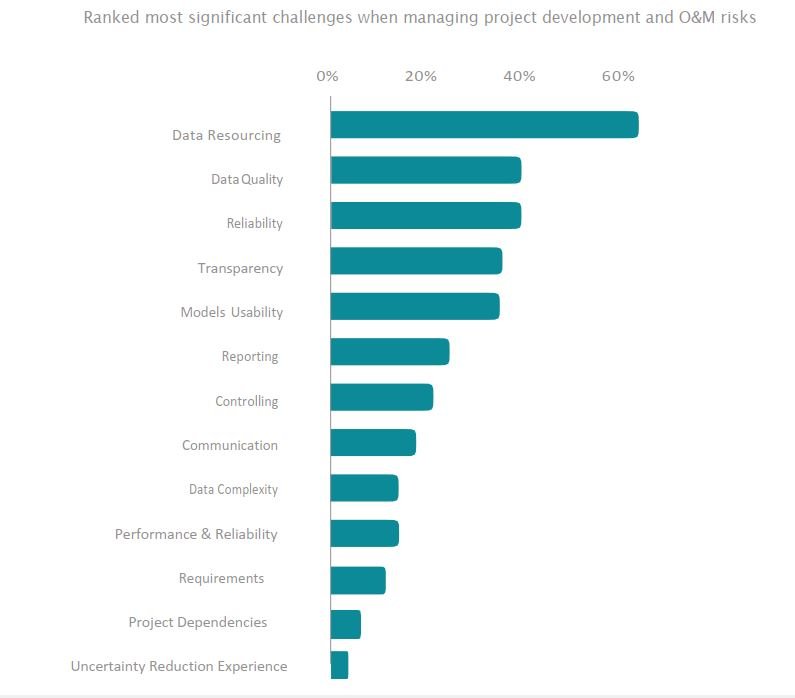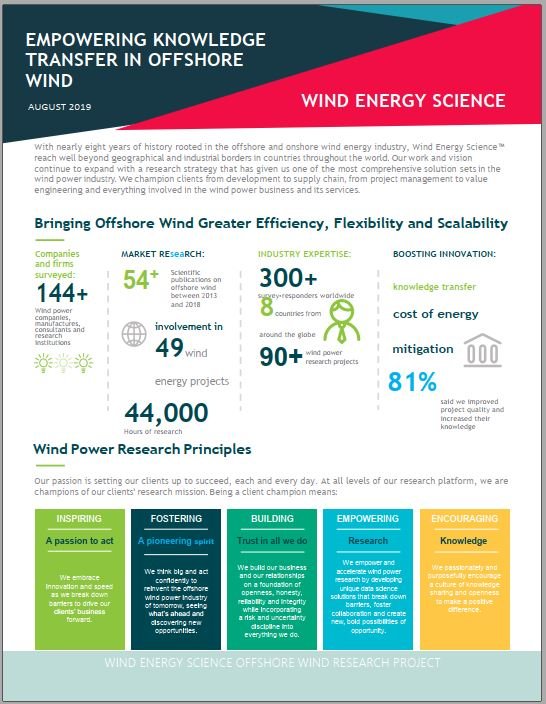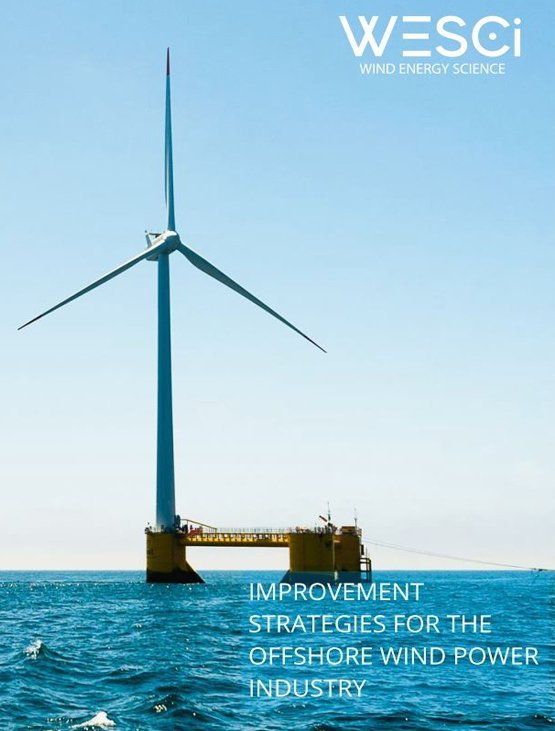Offshore Wind Survey
This study had three main aims: 1) To understand the most significant challenges and their impacts on the industry. 2) To examine the potential role on a new regulatory framework for the wind power industry as a whole. 3) To identify the perceived barriers to further wind energy investments development.
Data were collected through an online questionnaire undertaken during the first week of April 2019, with a sample of 245 respondents. The latter sample was expected to have had greater exposure to the offshore wind industry management and development practices. While this was indeed the case, there were few statistically noteworthy differences in responses between the two samples. Across both samples unfamiliarity with the issues presented in the questionnaire was at times high, for risks in general as well as those specific to operational excellence.
According to our analysis, wind power should become the leading power generation technology by 2030 to establish the effective decarbonization of the global economy. Our optimistic scenarios predict that offshore wind capacity can reach 100-120 gigawatts (GW) by 2030 as innovation in offshore wind technologies and methods continues.
However, according to our research, offshore wind capacity could increase faster if new policies and regulatory framework improvements adopted to double renewable energy production.
Access to finance is the major area of concern in terms of offshore wind power projects economic viability
1. Half of senior wind power professionals think that the current regulatory framework must be updated and long-term policy schemes should be also introduced with more than a quarter of those responding saying the need is more urgent, i.e., as soon as possible in the next two years
2. Data Resourcing ranks as the top challenge when managing project development and O&M risks, with worries over finding appropriately skilled human resources clearly beating other concerns.
3. Access to finance is the major area of concern in terms
of offshore wind power projects economic viability,with almost 80 percent of those that responded saying that by providing credit support to the sector and make project data publicly available, the financing of offshore wind projects can be significantly improved.
4. New pinch points to overcome supply chain and logistics challenges are emerging with addressing availability of construction ports and installation vessels emerge as strategic actions.
5. Support innovation, training and enhance synergies are also often seen as big challenges now that great competition is considered as a driver to reduce offshore wind LCOE.
6. The development of a fully integrated European electricity network with a politically backed master plan is a critical concern, in order to ensure cost-effective grid investment and connection


Disclaimer
The opinions expressed in the conclusion of this survey are entirely those of the authors and do not necessarily reflect the view of the Wind Energy Science. The Wind Energy Science Research platform is not liable for the accuracy of the information provided or responsible for any use of the content.


